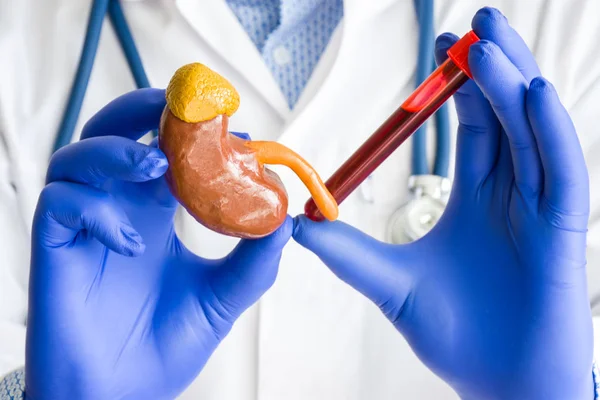Creatinine is a waste product produced by muscle metabolism and is typically expelled from the body through the kidneys. Is creatinine level 1.7 dangerous? The answer to this question hinges on understanding the role of creatinine as an indicator of kidney health. Efficient kidney function is vital for filtering waste, and elevated creatinine levels can signal that the kidneys are not working effectively. This introduction sets the stage to explore what a creatinine level of 1.7 means in the context of kidney health and overall well-being.
Table of Contents
ToggleNormal Creatinine Levels
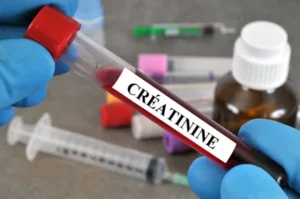
Understanding what is considered ‘normal’ for creatinine levels is crucial before discussing whether is creatinine level 1.7 dangerous. Normal creatinine ranges vary based on several factors such as age, gender, and muscle mass:
- Men: Typically, 0.6 to 1.2 milligrams per deciliter (mg/dL)
- Women: Generally, 0.5 to 1.1 mg/dL
These values represent the average expected creatinine levels for adults and can slightly vary between different laboratories. Variations might occur due to muscle mass, since individuals with higher muscle content typically have higher creatinine levels naturally. For children and teenagers, the normal ranges are lower, reflecting their different muscle mass and body composition.
Is creatinine level 1.7 dangerous?
The question of whether a creatinine level of 1.7 is dangerous can depend on several factors, including age, gender, muscle mass, and overall health. Generally, the normal range for creatinine in the blood is approximately 0.6 to 1.2 mg/dL for males and 0.5 to 1.1 mg/dL for females. Levels above these ranges may indicate that the kidneys are not functioning properly.
A creatinine level of 1.7 mg/dL is above the normal range for most adults and might suggest kidney impairment or disease. However, it is essential to consider other factors like individual health conditions and consult with a healthcare provider for a complete evaluation. This level could be a sign of reduced kidney function, and further diagnostic tests might be necessary to understand the underlying cause and appropriate treatment options.
High Creatinine Levels: Causes and Risk Factors
Exploring the causes and risk factors for high creatinine levels provides insight into why the question ‘Is creatinine level 1.7 dangerous?’ is significant. Elevated creatinine can arise from both chronic and acute conditions affecting kidney function:
- Kidney Conditions:
- Kidney infection – Bacterial infections can compromise kidney function.
- Glomerulonephritis – Inflammation of the tiny filters in the kidneys.
- Kidney stones – Can block the flow of urine, causing creatinine to build up.
- Kidney failure – When kidneys can no longer filter waste effectively.
- Lifestyle Factors:
- High protein diet – Can increase creatinine as more waste from protein metabolism needs to be filtered.
- Dehydration – Reduces blood flow to the kidneys, impairing their function.
- Intense exercise – Muscle breakdown increases creatinine production.
- Other Health Issues:
- Hypertension and diabetes – Both can damage the kidneys over time.
- Medications – Such as NSAIDs, can affect kidney function.
These factors illustrate the complex nature of kidney health and the importance of regular monitoring to detect potential problems early. Knowing these risks helps to understand why the question ‘Is creatinine level 1.7 dangerous?’ is important, especially if the elevation is consistent and accompanied by other symptoms of kidney dysfunction.
Symptoms of High Creatinine Levels
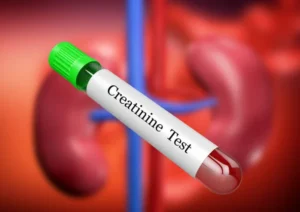
Identifying the symptoms associated with high creatinine levels is critical to understanding why the question ‘Is creatinine level 1.7 dangerous?’ is important. Elevated creatinine often accompanies noticeable health changes, which may include:
- General Symptoms:
- Fatigue and weakness, affecting daily activities.
- Fluid retention or swelling, especially in the feet and legs.
- Shortness of breath, which can be due to fluid overload affecting the lungs.
- Confusion or mental fog, often due to toxins accumulating in the blood.
- Specific Kidney-Related Symptoms:
- Changes in urination patterns, such as decreased urine output or darker urine.
- Persistent nausea, a sign of toxin buildup in the bloodstream.
- An unpleasant metallic taste or ammonia odor.
These symptoms warrant immediate medical attention, especially if they persist, to prevent potential kidney damage from worsening. Understanding these signs helps underscore why the question ‘Is creatinine level 1.7 dangerous?’ is important when considering kidney health and function.
Diagnosis of High Creatinine Levels
Diagnosing the reason behind the concern ‘Is creatinine level 1.7 dangerous?’ involves several tests to assess kidney function and identify the underlying causes of elevated creatinine:
- Blood Tests:
- Serum Creatinine Test: Measures the amount of creatinine in the blood.
- Blood Urea Nitrogen (BUN): Assesses nitrogen levels in the blood as a marker for kidney function.
- Urine Tests:
- Urine Creatinine Test: Determines creatinine clearance to evaluate kidney filtering capacity.
- Proteinuria Test: Detects excess protein in the urine, an early sign of kidney damage.
- Advanced Diagnostic Tests:
- Glomerular Filtration Rate (GFR): Calculates how well the kidneys are filtering wastes.
- Imaging Tests (Ultrasound, CT, MRI): Identifies structural abnormalities in the kidneys.
- Kidney Biopsy: A direct examination of kidney tissue to diagnose the specific type of kidney disease.
These diagnostic tools are essential for determining the severity of kidney impairment and formulating an appropriate treatment strategy. Early detection through these methods is crucial, particularly when evaluating why the question ‘Is creatinine level 1.7 dangerous?’ is relevant and potentially harmful to overall health.
Treatment Options for High Creatinine Levels
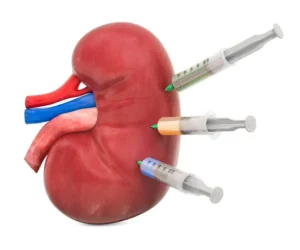
Addressing the critical question- is creatinine level 1.7 dangerous? involves exploring various treatment strategies tailored to the underlying cause of high creatinine levels:
- Lifestyle Modifications:
- Hydration: Ensuring adequate fluid intake to help kidneys filter waste.
- Diet: Reducing protein intake and focusing on a balanced diet rich in fruits, vegetables, and whole grains.
- Exercise: Regular physical activity to maintain overall health without excessive strain.
- Medications:
- Blood Pressure Medications: Such as ACE inhibitors or ARBs to protect kidney function.
- Diuretics: To help remove excess fluid and decrease blood pressure.
- Phosphate Binders: To reduce the absorption of phosphate from the diet, which can be harmful in kidney disease.
- Advanced Treatment Options:
- Dialysis: Used in severe cases where the kidneys can no longer effectively filter waste from the blood.
- Kidney Transplant: Considered when kidney function is critically impaired and other treatments are not effective.
Each treatment option is chosen based on individual patient needs, and ongoing monitoring of creatinine levels is essential to adjust treatments as necessary. These interventions highlight the importance of understanding why the question ‘Is creatinine level 1.7 dangerous?’ matters and taking proactive steps to manage kidney health.
Preventing Kidney Damage
Preventative measures are crucial in addressing why the question ‘Is creatinine level 1.7 dangerous?’ is significant and how to mitigate risks associated with elevated creatinine levels:
- Regular Monitoring:
- Blood and Urine Tests: Regular screening for creatinine levels and kidney function.
- Blood Pressure Checks: Maintaining a healthy blood pressure to prevent kidney damage.
- Dietary Adjustments:
- Low-Protein Diet: Reducing protein intake to decrease kidney workload.
- Salt and Potassium Control: Watching intake to avoid excess strain on the kidneys.
- Lifestyle Changes:
- Smoking Cessation: Smoking can impair kidney function and should be stopped.
- Moderate Alcohol Consumption: Limiting alcohol to prevent additional kidney stress.
- Diabetes and Hypertension Management:
- Effective Control of Blood Sugar: Preventing diabetes-related kidney damage.
- Hypertension Management: Using diet, exercise, and medications to keep blood pressure within recommended limits.
These preventative strategies are essential for maintaining kidney health and preventing conditions that elevate creatinine levels. Is creatinine level 1.7 dangerous? Addressing this question proactively is key to understanding the associated risks and avoiding long-term complications
FAQs and Additional Insights
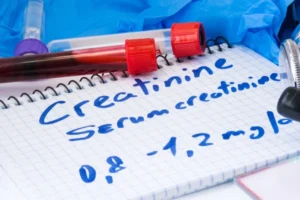
- What level of creatinine indicates kidney disease?
- While the question is creatinine level 1.7 dangerous? can depend on individual factors such as age and muscle mass, generally, creatinine levels above 1.2 mg/dL for men and 1.0 mg/dL for women might indicate kidney disease. For an informed assessment, speaking with a healthcare professional is crucial.
- How often should creatinine levels be tested?
- Individuals with known risk factors for kidney disease (such as hypertension or diabetes) should have their creatinine levels tested annually. Those without known risk factors but are concerned about kidney health should discuss testing frequency with their doctor.
- Can lifestyle changes significantly impact creatinine levels?
- Yes, lifestyle changes can have a significant impact on creatinine levels. Hydration, balanced diet, regular exercise, and avoiding substances that stress the kidneys (like NSAIDs and certain supplements) can help maintain optimal kidney function and creatinine levels.
- What should you do if your creatinine level is high?
- If your creatinine level is high, it is important to:
- Consult a healthcare provider: To determine the underlying cause and appropriate treatment.
- Follow prescribed treatments: Which may include medications, lifestyle adjustments, or more intensive interventions like dialysis.
- Monitor kidney function regularly: To assess the effectiveness of treatment and adjust as needed.
- If your creatinine level is high, it is important to:
Read Also:
-
10 Essential High-Fiber Foods Chart for Constipation: Boost Your Digestive Health
-
A Comprehensive Guide to Supplements for Digestive Health – Nurturing Digestive Wellness
-
Understanding When to Worry: What Size of Ovarian Cyst is Dangerous?
-
8 Incredible Chia Seeds Benefits for Skin: Why Your Dermatologist Might Recommend Them
